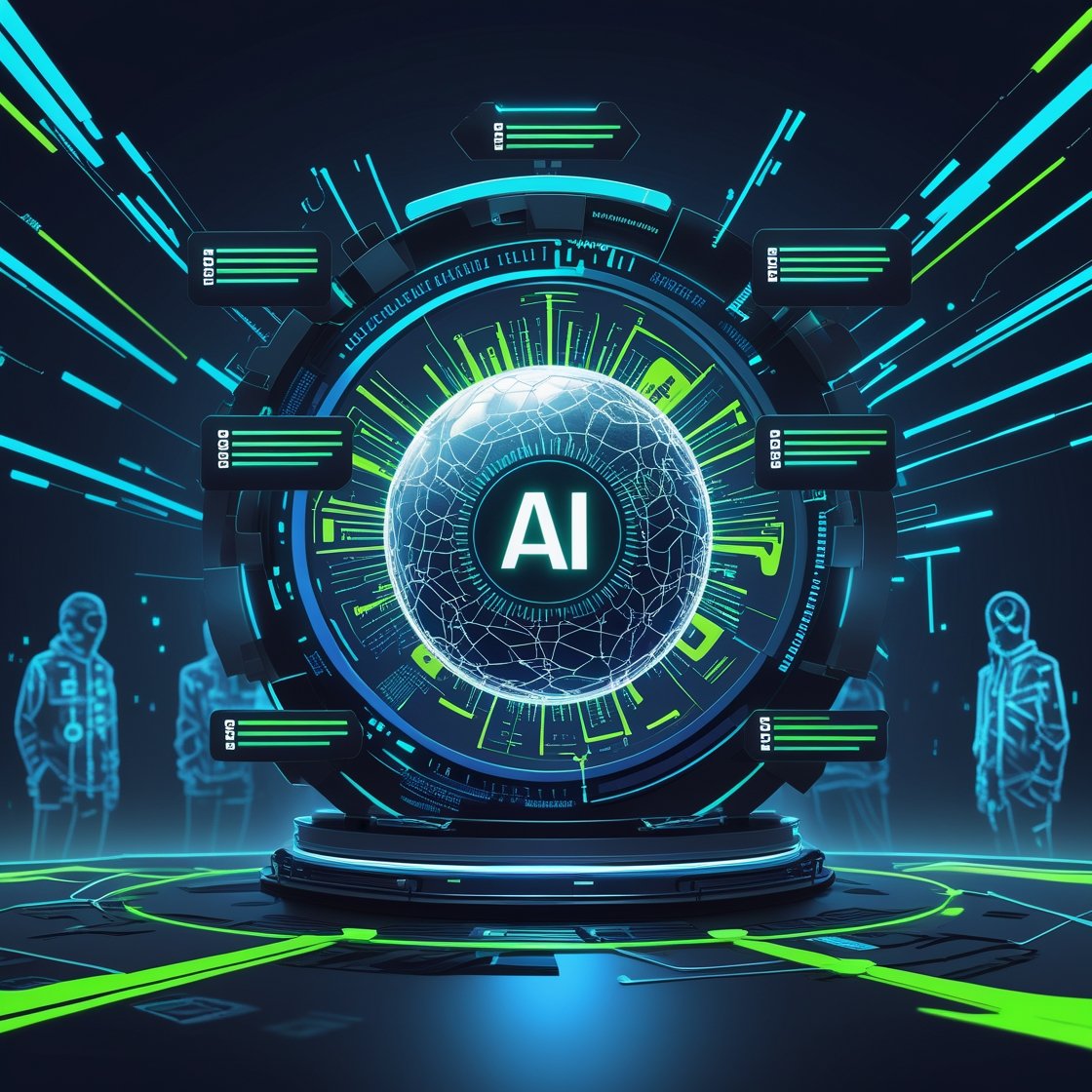Introduction
Cybercrime is escalating at an alarming rate, with global damages projected to reach $10.5 trillion annually by 2025 (Cybersecurity Ventures). As threats grow more sophisticated, traditional security measures struggle to keep up. Enter Artificial Intelligence (AI)—a game-changer in detecting, preventing, and responding to cyber threats in real time.
AI enhances cybersecurity by analyzing vast datasets, identifying anomalies, and automating defenses faster than any human could. However, cybercriminals are also leveraging AI, creating an ongoing arms race between attackers and defenders.
In this article, we’ll explore:
- How AI is transforming threat detection and response.
- Real-world applications of AI in cybersecurity.
- The risks of AI-powered cyberattacks.
- Ethical concerns and the future of AI in digital defense.
1. The AI Cybersecurity Landscape
Why AI is a Game-Changer
Traditional cybersecurity relies on rule-based systems and signature detection, which struggle against zero-day exploits and polymorphic malware. AI, particularly machine learning (ML) and deep learning, excels at:
- Pattern recognition – Detecting subtle anomalies in network traffic.
- Speed & scalability – Analyzing millions of events per second.
- Adaptive learning – Improving defenses based on new attack vectors.
According to Capgemini Research, 61% of enterprises now rely on AI-driven cybersecurity to combat breaches.
Key Areas Where AI is Making an Impact
- Threat Detection – Identifying malware, phishing, and insider threats.
- Behavioral Analysis – Monitoring user activity for deviations.
- Automated Response – Blocking attacks without human intervention.
- Fraud Prevention – Detecting financial fraud in real time.
2. AI-Powered Cybersecurity Applications
1. Threat Detection & Anomaly Detection
AI-powered tools like Darktrace and Cylance use unsupervised learning to detect unusual behavior in networks.
- Example: AI can flag a ransomware attack before encryption begins by spotting abnormal file access patterns.
2. Phishing & Fraud Prevention
Natural Language Processing (NLP) models (e.g., Google’s BERT) analyze emails for malicious intent.
- Google’s AI blocks 99.9% of spam and phishing emails.
- Banks use AI to detect synthetic identity fraud (fake accounts).
3. Behavioral Biometrics
AI tracks keystroke dynamics, mouse movements, and login times to detect imposters.
- If a hacker steals credentials, AI can still block them based on behavioral mismatches.
4. Automated Incident Response
AI-driven systems like IBM’s Watson for Cyber can:
- Auto-patch vulnerabilities (e.g., Microsoft’s AI patches zero-day flaws).
- Isolate infected devices to prevent lateral movement.
Case Study: CrowdStrike’s AI Stopping a Breach
CrowdStrike’s Falcon Platform used AI to detect and neutralize a state-sponsored attack in under 2 hours, a task that would take humans days.
3. The Dark Side: AI in the Hands of Hackers
AI-Powered Cyberattacks
Cybercriminals now use AI for:
- Deepfake Social Engineering – Mimicking CEOs’ voices to authorize fraudulent transfers.
- Adversarial Machine Learning – Tricking AI models into misclassifying malware.
- Automated Malware – AI-generated polymorphic code evades signature detection.
Example: WormGPT – The AI Phishing Tool
WormGPT, a malicious ChatGPT-like tool, crafts highly convincing phishing emails, bypassing traditional filters.
The AI Arms Race
As defenders deploy AI, attackers adapt—leading to an endless cycle of escalation.
4. Challenges and Ethical Concerns
1. False Positives & Negatives
- Over-reliance on AI can lead to missed threats or unnecessary alerts.
2. Data Privacy Risks
- AI requires massive datasets, raising concerns about surveillance and misuse.
3. AI Bias & Exploitation
- Hackers can poison training data to manipulate AI defenses.
4. Regulatory Gaps
- No global standards govern AI in cybersecurity, leaving vulnerabilities.
5. The Future of AI in Cybersecurity
Emerging Trends
- AI-Powered Digital Immune Systems – Self-healing networks.
- Quantum AI – Unbreakable encryption vs. ultra-fast hacking.
- Decentralized AI Defense – Blockchain + AI for tamper-proof security.
Call to Action
Businesses must:
Invest in AI-enhanced security tools.
Train staff on AI-driven threats.
Advocate for ethical AI regulations.
Conclusion
AI is revolutionizing cybersecurity—supercharging defenses while also empowering hackers. The future belongs to organizations that harness AI’s power responsibly. As the saying goes:
“AI won’t replace cybersecurity experts—but those using AI will replace those who don’t.”





